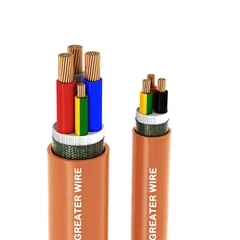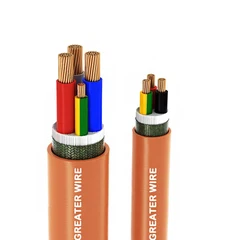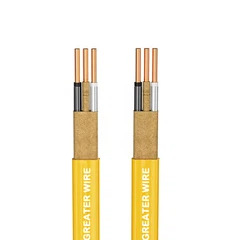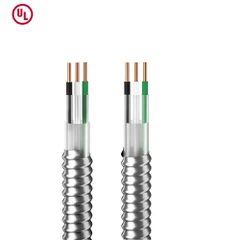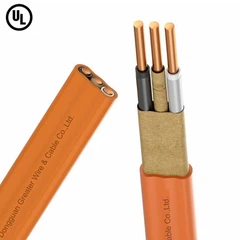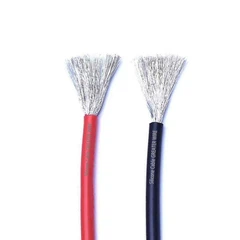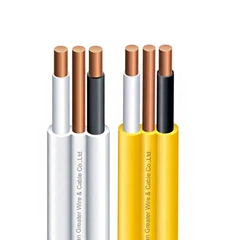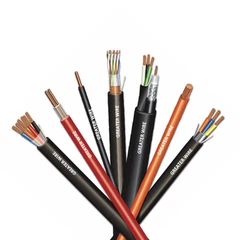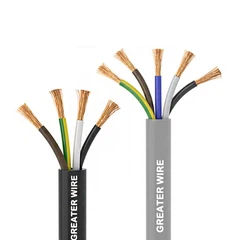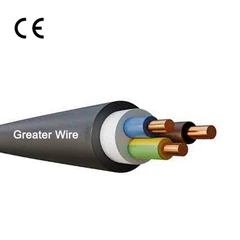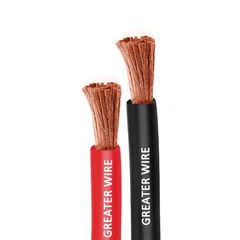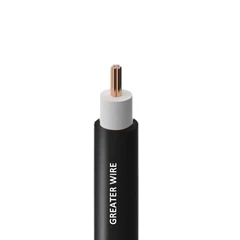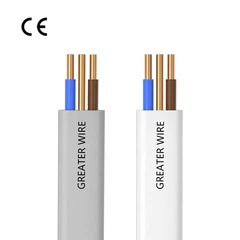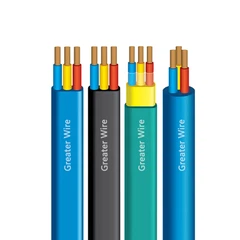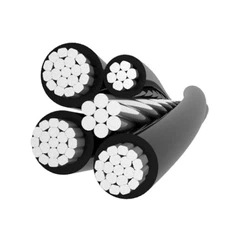Medium voltage cables (MV cables) are specially engineered power cables designed to transmit electricity at voltages typically ranging from 1kV to 35kV. They serve as a crucial link between high-voltage transmission lines and low-voltage distribution systems, making them essential for powering industrial facilities, infrastructure projects, renewable energy systems, and utility networks.
At Greater Wire Manufacturer, our MV cables are manufactured to meet UL 1072, SAA, IEC, and IEEE standards. In this blog, we mainly introduce the medium voltage cable standards in different regions.
1. Medium Voltage Cable Standards
1.1 SAA Standard Medium Voltage Cable Overview (AS/NZS 1429.1 Compliant)
Medium voltage cables certified to AS/NZS 1429.1 for Oceania (Australia, New Zealand, and surrounding areas or countries). Built with XLPE insulation, copper or aluminium conductors, and optional termite-resistant outer sheaths, these cables deliver superior performance in harsh environments. They feature UV resistance, chemical durability, and fire-retardant, low-smoke emission sheathing, making them ideal for underground, duct, and outdoor installations. Available in voltages from 1.9/3.3kV to 19/33kV, these cables meet all key SAA safety, thermal, and electrical standards.

AS/NZS Standard Single Sore Medium Voltage Cable

AS/NZS Standard Three Sore Medium Voltage Cable
1.2 UL Standard MV-90 & MV-105 Cable Overview (UL 1072 Compliant)
MV-90 and MV-105 medium voltage cables are designed for reliable power distribution, with the primary difference lying in their thermal ratings and environmental resilience. Mainly used in North America and Latin American regions or countries. MV-90 cables are rated for 90°C continuous operation and are suitable for standard industrial and commercial applications, often using EPR or thermoset CPE insulation. They are available in non-shielded or light shielded (LCS) constructions. In contrast, MV-105 cables support 105°C continuous operation and are built for more demanding environments, offering enhanced resistance to moisture, chemicals, sunlight, and mechanical stress. These cables typically feature copper tape or wire shielding and are ideal for direct burial, duct, tray, and outdoor installations. Both types comply with UL 1072 industry standards. MV-105 is preferred for higher-load systems and critical infrastructure requiring long-term performance in harsh conditions.
MV 90 & MV 105 cable types are manufactured following industry standards such as:
• UL 1072 – governing medium voltage power cables used in distribution circuits,
• ICEA S-93-639 / NEMA WC 74 – covering construction and performance requirements for 5kV to 46kV cables,
• IEEE 383 or IEEE 1202 – flame testing standards (as applicable),
• AEIC CS8 – for cables with extruded insulation and shielding.

Single Core MV 90 & MV 105 Cable

3 Core MV 90 & MV 105 Cable
1.3 IEC Standard Medium Voltage Cable Overview
Medium voltage power cables use high-purity XLPE insulation over IEC 60228 Class 2 copper or aluminium conductors, manufactured to IEC 60502‑2 standards to support voltage classes up to 36 kV. With outstanding dielectric and thermal performance (90 °C continuous, 250 °C short‑circuit), these cables deliver low capacitance, low losses, and long-term reliability. They come in single-core or three-core configurations with extruded semi-conductive layers, copper tape/wire shielding, and optional armouring or water blocking. Comprehensive current‑rating tables and derating factors account for ambient, soil, depth, and grouping conditions, while mechanical limits and short‑circuit ratings ensure safe design. Installation features include defined bending radius limits and cold-storage handling parameters, plus optional flame-retardant, halogen-free, or rodent-resistant jackets for demanding environments.
2. Construction of Medium Voltage Cable
Medium voltage (MV) cables are constructed with a multi-layered design to protect electrical safety, mechanical strength, and long-term reliability. While the core structural principles remain consistent across global standards, regional variations exist based on SAA, UL/ICEA, and IEC standards.
2.1. Conductor
All standards are typically single core or 3 core construction and specify Class 2 stranded copper or aluminum conductors.
• SAA/AS/NZS 1429.1: Requires compliance with AS/NZS 1125.
• UL 1072 / ICEA S-93-639 / NEMA WC 74: Use annealed or compressed conductors.
• IEC 60502-2: Requires Class 2 stranded conductors as per IEC 60228.
2.2. Conductor Screen
A semi-conductive extruded layer surrounds the conductor to control the electric field and eliminate corona discharge. This is mandatory in:
• SAA: Typically extruded semiconducting compound.
• UL/ICEA: May vary by cable type but often includes this layer in shielded constructions.
• IEC: Mandatory for all cables ≥3.6/6kV.

2.3. Insulation Layer
The insulation is usually XLPE (Cross-linked Polyethylene) or EPR (Ethylene Propylene Rubber), selected for high dielectric strength and heat resistance.
• SAA: Allows XLPE or EPR insulation with 90°C continuous rating, up to 105°C for special applications.
• UL MV-90 / MV-105: Defines thermal performance - MV-90 for 90°C, MV-105 for 105°C continuous operation.
• IEC: Typically 90°C XLPE insulation, short-circuit rating up to 250°C.
2.4. Insulation Screen
Another semi-conductive layer is extruded over the insulation to maintain field control and interface with the metallic screen. Required by all standards for shielded MV cables. IEC and SAA specify bonded or strippable insulation screens depending on application.
2.5. Metallic Screen
Used for grounding and fault current control, commonly implemented as:
• Copper wires + copper tape (IEC, SAA)
• Helically-applied copper tape or concentric neutral (UL/ICEA)
• UL often uses Concentric Neutral (CN) constructions for power distribution networks.
2.6. Water Blocking (Optional)
• IEC/SAA: May include swellable tapes or powders (dry-core design) to prevent moisture ingress.
• UL/ICEA: Water-blocking optional but common for direct burial cables.
2.7. Inner Bedding / Sheath (Optional)
Present when armor is applied, made from PVC, thermoplastic, or LSZH compounds. Acts as a bedding between insulation and armor.
2.8. Armoring (Optional)
For mechanical protection in harsh environments:
• SAA: Allows aluminum wire armor (AWA) or steel wire armor (SWA).
• UL: May include interlocked armor (MC-type cables).
• IEC: Steel tape or wire armor, depending on cable type and environment.
2.9. Outer Sheath / Jacket
The final layer, provides environmental and mechanical protection.
• SAA: PVC, HDPE, or LSZH; anti-termite Nylon 12 optional.
• UL/ICEA: CPE or PVC jackets; often sunlight and oil-resistant.
• IEC: PE, PVC, or LSZH; flame retardant versions available per IEC 60332.

3.Medium Voltage Cables Applications
Medium voltage cables are widely used in power systems operating between 1kV and 35kV, playing a critical role in the reliable distribution of electricity across various industries and infrastructure. These cables are commonly installed in utility networks, industrial complexes, and commercial buildings to transmit power between substations, transformers, and end-user equipment. Their robust construction makes them suitable for underground installations, cable trays, and duct systems in urban grids. Medium voltage cables are also extensively used in renewable energy projects such as solar farms and wind power plants, connecting generation units to distribution systems. In high-demand environments like airports, hospitals, data centers, and mining operations, MV cables ensure continuous, safe power delivery, even under thermal, mechanical, or chemical stress. Thanks to advanced insulation materials, metallic shielding, and optional armoring, MV cables are engineered to perform reliably in harsh conditions, including moisture-prone areas, corrosive atmospheres, and fire-risk zones.

Dongguan Greater Wire & Cable Co., Ltd., we take pride in delivering medium voltage cables that meet the highest international standards. With full certification under SAA for Oceania, UL certification for North America and Latin America, and CE compliance for the European, African, or other markets, our MV cables are trusted for performance, safety, and global reliability. Whether your project requires strict regional compliance or durable solutions for demanding environments, Greater Wire is your dependable partner. Contact us today to discuss your specifications or request a customized solution tailored to your industry needs.

